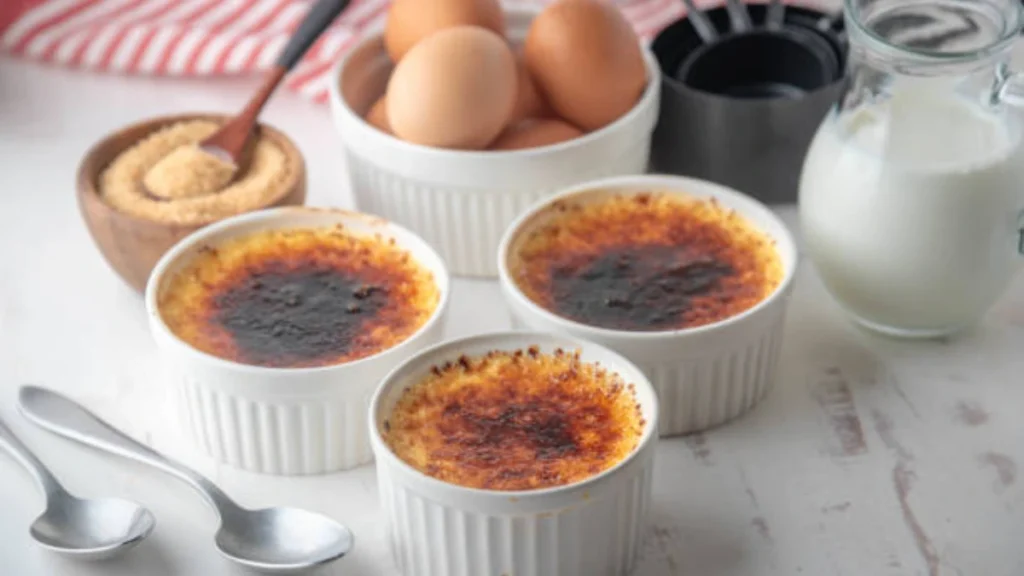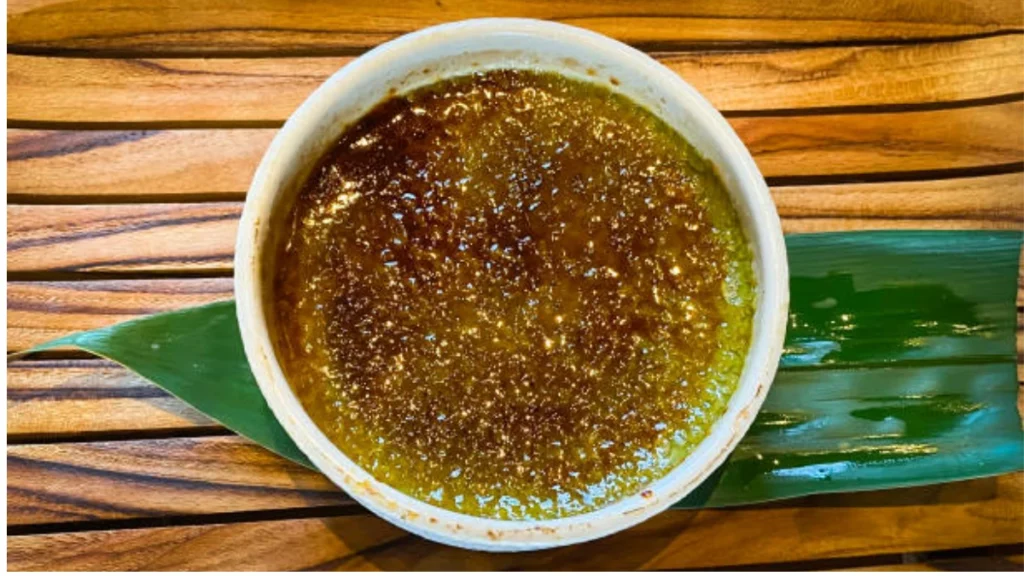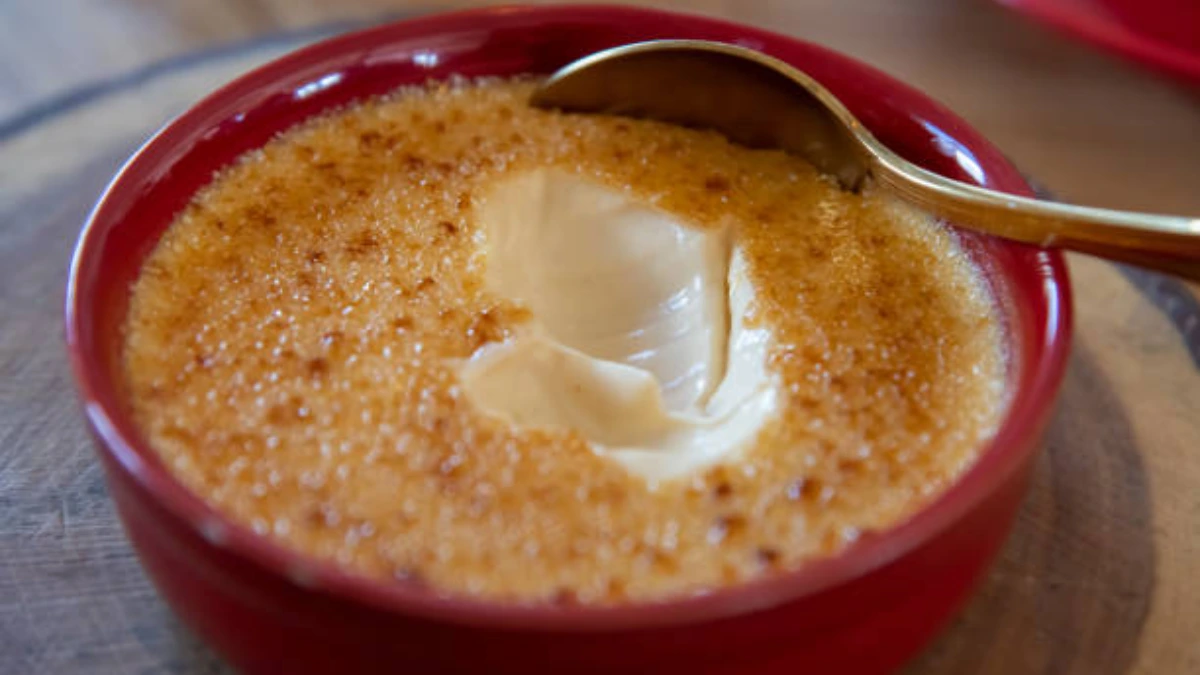IntroductionBrûlée Recipe Different Flavors
5 Creme Brûlée Recipe Different Flavors You Must TryThe Allure of Creme Brûlée: A Dessert That Never Gets Old
Crème brûlée, with its smooth custard base and crisp, caramelized sugar topping, is the quintessential French dessert that remains perennially beloved. Its delicate yet indulgent texture makes it an irresistible treat, combining rich creaminess with a satisfying crunch. Whether served at an elegant dinner party or as a comforting end to a family meal, crème brûlée never fails to captivate. But as any skilled pastry chef will tell you, there is more to this classic than meets the eye.
Why Experimenting with Different Flavors Elevates Creme Brûlée
While the traditional vanilla flavor is undoubtedly divine, there’s something extraordinary about pushing the boundaries and infusing this timeless dessert with a range of flavors. Experimenting with different flavors elevates crème brûlée from a simple dessert to a culinary masterpiece. Each variation offers a new experience, whether it’s the rich depth of chocolate, the zing of citrus, or the earthy tones of matcha. The possibilities are endless, and the results are always indulgently rewarding.
Understanding the Basics of Creme Brûlée
What is Creme Brûlée? A Brief Overview
At its core, crème brûlée is a custard dessert made from egg yolks, sugar, heavy cream, and vanilla, traditionally served in small ramekins. The beauty of crème brûlée lies in its simplicity: it’s a delicate blend of cream and eggs, with a subtle sweetness that’s highlighted by the signature caramelized sugar crust. The method of cooking this dessert—baking it in a water bath (bain-marie)—ensures that the custard remains perfectly smooth, setting just right without curdling.

Key Ingredients in a Traditional Creme Brûlée Recipe
The fundamental ingredients of crème brûlée are straightforward but essential for achieving that perfect balance of flavor and texture. Egg yolks create the custard’s creamy base, while sugar provides sweetness and enhances the caramelization process. Heavy cream lends the dessert its luxurious texture, and vanilla, often infused from beans, gives the crème brûlée its signature fragrance. Each ingredient works in harmony, allowing for the flavor to shine through, whether you stick with the classic recipe or explore new flavor profiles.
The Art of Perfecting the Creme Brûlée Custard Base
Perfecting the custard base is an art in itself. The key is to cook the custard gently, over low heat, to avoid scrambling the eggs. It requires patience and attention to detail—constantly stirring the mixture to achieve a smooth, velvety consistency. Once this base is prepared, it must be carefully poured into ramekins and baked in a water bath to ensure even cooking. The result should be a custard that’s rich, velvety, and ever so slightly wobbly at the center.
Essential Tools for Making Creme Brûlée
The Must-Have Equipment for Every Creme Brûlée Enthusiast
To create the perfect crème brûlée, you need a few essential tools. First and foremost, sturdy ramekins are a must-have for even baking and easy serving. A fine-mesh sieve is crucial for straining the custard and removing any lumps or imperfections. An oven-safe pan or dish to hold the ramekins during the baking process is also necessary for a proper water bath. Additionally, a kitchen thermometer will ensure that your custard reaches the ideal temperature without risk of curdling.
How to Choose the Right Brûlée Dishes for Even Caramelization
Choosing the right ramekins is critical for achieving the perfect caramelized crust. Opt for shallow, wide ramekins—these allow for a larger surface area, ensuring that the sugar can be evenly spread and caramelized when torched. The size of the ramekin should also be considered: smaller dishes allow for quicker, more uniform cooking, while larger ones may need additional time in the oven to cook the custard evenly.
The Importance of a Culinary Torch in Achieving the Perfect Crust
No crème brûlée is complete without the signature crack of its golden, caramelized sugar crust. A culinary torch is essential for this final step, allowing for precise control over the sugar. The torch’s flame should be held just above the sugar, moving in small, circular motions to avoid burning any one area. This creates an even, glossy layer that adds a satisfying crunch to every spoonful.
Flavor #1: Vanilla Bean Creme Brûlée
The Classic Flavor: Why Vanilla is a Timeless Choice
Vanilla bean crème brûlée is the epitome of elegance. The rich, aromatic flavor of vanilla perfectly complements the creamy custard, making it the most popular choice among dessert lovers. This classic flavor never goes out of style, and for good reason—it highlights the dessert’s delicate texture while allowing the custard to take center stage. When made with real vanilla beans, the result is a truly luxurious treat that exudes sophistication.
How to Incorporate Real Vanilla Beans for Maximum Flavor
To achieve the deepest and most authentic vanilla flavor, using whole vanilla beans is key. Split the bean lengthwise, scrape out the seeds, and infuse them in the warm cream before mixing with the egg yolks. This process allows the vanilla’s essential oils to fully infuse into the custard base, resulting in a rich, aromatic flavor that is far superior to vanilla extract.
Tips for Achieving a Smooth and Rich Vanilla Custard
The secret to a perfect vanilla bean crème brûlée lies in the custard’s smoothness. Ensure that the cream is heated just until it’s almost boiling—this allows the vanilla’s flavor to fully infuse. When mixing the egg yolks and sugar, whisk until the mixture is pale and thick, which will help prevent any graininess in the final custard. Carefully temper the egg mixture by slowly adding the warm cream to avoid curdling, then strain the mixture before baking to ensure a silky smooth finish.
Flavor #2: Chocolate Creme Brûlée
A Decadent Twist: Why Chocolate Makes Creme Brûlée Even Better
For those with a sweet tooth, chocolate crème brûlée is a decadent twist on the traditional recipe. The addition of chocolate brings an indulgent richness to the custard, creating a dessert that’s both velvety and deeply satisfying. Whether you prefer dark chocolate, milk chocolate, or a blend of both, the creamy base offers the perfect vehicle for the chocolate’s deep, complex flavor.
How to Infuse Dark or Milk Chocolate into the Custard
Start by melting the chocolate of your choice and allowing it to cool slightly before incorporating it into the custard base. This ensures that the chocolate blends smoothly with the cream and egg yolks, creating a homogenous mixture. Be sure to use high-quality chocolate for the best flavor, as it will make a noticeable difference in the final taste of your crème brûlée.
Perfecting the Balance of Chocolate and Cream for an Irresistible Taste
The key to a successful chocolate crème brûlée lies in finding the perfect balance between the chocolate and cream. Too much chocolate can overwhelm the custard, while too little can result in a bland flavor. A good ratio is usually around 4 ounces of chocolate to 1 cup of cream, allowing the chocolate’s richness to shine through without overpowering the delicate custard.
Flavor #3: Coffee Creme Brûlée
The Bold Pairing: Why Coffee and Creme Brûlée Are a Match Made in Heaven
For coffee lovers, a rich coffee crème brûlée offers the ideal union of deep, roasted flavor and velvety custard. The bitterness of coffee enhances the sweetness of the dessert, creating a harmonious balance that’s both bold and indulgent. It’s the perfect choice for anyone seeking a more sophisticated twist on the classic crème brûlée.
Choosing the Right Coffee Beans for the Perfect Kick
Opt for a dark roast coffee when making a coffee-flavored crème brûlée. The deep, smoky flavor of the coffee will infuse beautifully into the custard, offering a robust, satisfying taste. Choose freshly ground beans for the best results, as pre-ground coffee can lose its intensity over time.
Tips for Adding Coffee Without Overpowering the Custard Flavor
To prevent the coffee flavor from overpowering the custard, start by steeping the coffee grounds in the cream for a few minutes before straining it. This method allows the coffee’s flavor to infuse subtly into the custard, giving it a full-bodied taste without overwhelming the delicate sweetness of the vanilla.
Flavor #4: Citrus Creme Brûlée (Lemon, Orange, or Lime)
A Fresh Zing: How Citrus Adds a Bright Flavor to the Classic Dessert
Citrus crème brûlée provides a refreshing contrast to the richness of the custard. Whether using lemon, orange, or lime, the tangy notes of citrus brighten the dessert and offer a lively twist on the traditional recipe. The acidity of the citrus complements the sweet custard beautifully, creating a balanced and delightful dessert.
Incorporating Lemon Zest and Juice for the Ultimate Citrus Burst
For a perfectly flavored citrus crème brûlée, use both the zest and juice of your chosen citrus fruit. The zest adds a concentrated burst of essential oils, while the juice provides a juicy, refreshing tang. Be sure to strain the mixture to remove any zest or pulp before baking to ensure a smooth, creamy custard.
Balancing Tangy Notes with the Sweetness of the Custard
Citrus is potent, so it’s essential to balance its tanginess with the sweetness of the custard. Too much citrus can tip the flavor scales, while too little may leave the custard tasting flat. A good rule of thumb is to use the zest of one medium fruit and a few tablespoons of juice, adjusting according to personal taste.
Flavor #5: Matcha Creme Brûlée
Why Matcha is Gaining Popularity in Dessert Recipes
Matcha, with its vibrant green color and earthy flavor, has quickly become a favorite in the world of desserts. This finely powdered green tea is rich in antioxidants and imparts a unique, slightly bitter flavor that pairs beautifully with the creaminess of crème brûlée. Matcha crème brûlée offers a sophisticated and modern twist on the classic dessert.
How to Incorporate Matcha Powder into Your Creme Brûlée Base
To incorporate matcha into the custard, dissolve the powder in a small amount of hot cream before whisking it into the rest of the cream mixture. This ensures that the matcha is evenly distributed throughout the custard and prevents clumping. Use a high-quality ceremonial grade matcha for the best flavor and vibrant green color.
Balancing the Earthy Matcha Flavor with the Sweet Custard
Matcha’s earthy bitterness can sometimes overpower the delicate sweetness of the custard, so it’s crucial to find the right balance. A light hand is needed when adding the matcha powder—start with a small amount and adjust to taste. The goal is to create a harmonious blend where the matcha’s distinct flavor complements the smooth sweetness of the custard.

Alternative Flavor Ideas to Explore
Caramelized Banana Creme Brûlée: A Tropical Twist
Add a caramelized banana layer to your crème brûlée for a rich, indulgent dessert that combines tropical sweetness with the classic custard.
Coconut Creme Brûlée: A Creamy Island Escape
Coconut brings a silky smooth texture and exotic flavor, transforming crème brûlée into a luxurious island-inspired treat.
Berry-Infused Creme Brûlée: Blueberry, Strawberry, or Raspberry
Infuse your crème brûlée with fresh berries for a burst of color and a fruity contrast to the creamy custard.
Nutty Creations: Hazelnut and Pistachio Creme Brûlée Variations
Experiment with nutty flavors by adding ground hazelnuts or pistachios to your crème brûlée for a crunchy, flavorful twist.
Spiced Creme Brûlée: Infusing Cinnamon, Nutmeg, or Ginger
Infuse your crème brûlée with spices like cinnamon, nutmeg, or ginger for a warm, comforting dessert perfect for colder months.
Tips for Perfecting Your Creme Brûlée
Achieving the Ideal Custard Consistency: Creamy and Smooth
Perfecting the custard requires precision, from controlling the temperature of your cream to ensuring the eggs are tempered properly.
The Secret to Perfectly Caramelized Sugar: Achieving the Right Crunch
Achieving the ideal sugar crust requires patience and the right technique—use a kitchen torch to carefully melt the sugar into a crisp, golden crust.
Preventing Common Mistakes: How to Avoid Lumpy Custard or a Burnt Crust
Prevent lumpy custard by straining your mixture before baking, and avoid a burnt sugar crust by using even heat when caramelizing.
Serving and Pairing Your Creme Brûlée
Creative Ways to Serve Your Flavored Creme Brûlée
Serve your crème brûlée in unique ways, such as individual mini jars or garnished with fresh fruits and herbs for a visually stunning dessert.
Wine and Dessert Pairings: What to Drink with Your Creme Brûlée Flavors
Pair your crème brûlée with a dessert wine, like a rich Sauternes or a fruity Riesling, to enhance the flavors and add a touch of luxury.
How to Garnish Your Creme Brûlée for Visual Appeal and Added Flavor
Garnish with edible flowers, fresh berries, or a sprinkle of cocoa powder to elevate the visual and taste experience.
Troubleshooting Your Creme Brûlée
What to Do if Your Creme Brûlée Doesn’t Set Properly
If your crème brûlée doesn’t set, it may have been baked at too high a temperature. Try lowering the oven heat and adjusting the baking time.
How to Fix an Overcooked or Undercooked Creme Brûlée
Undercooked crème brûlée can be returned to the oven for a little longer, while overcooked versions should be discarded as they won’t return to their creamy texture.
Dealing with a Burnt Sugar Crust: Tips and Tricks
If your sugar crust burns, try using a gentler hand with the torch, and remember to work in small, circular motions to prevent uneven heating.
Conclusion
Why You Should Try These 5 Creme Brûlée Recipe Different Flavors
These five unique crème brûlée flavors bring new life to a classic dessert. From indulgent chocolate to refreshing citrus, there’s a flavor for every palate.
Elevate Your Dessert Game with Creative Creme Brûlée Twists
Don’t be afraid to experiment with new flavors, and watch as your crème brûlée becomes a conversation starter at every gathering.
A Final Word on Experimenting and Making Creme Brûlée Your Own
With so many flavor possibilities, crème brûlée offers endless opportunities for culinary creativity. Whether you stick to tradition or try something new, the result will always be an unforgettable dessert experience.

